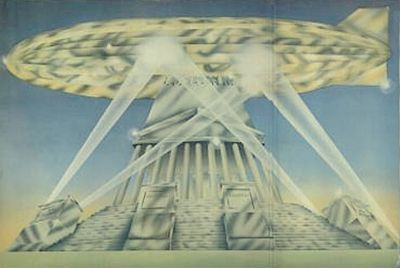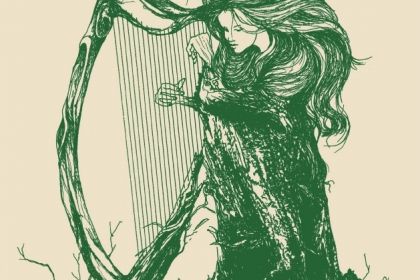MANDOLIN
Boogie with Stu: origins of Led Zeppelin's song featuring mandolin solo

Led Zeppelin's LP cover
Boogie with Stu is a remarkable Led Zeppelin track originally recorded for the 1971 release of their fourth album, but only included on the double 1975 Physical Graffiti. The song title mentions Ian Andrew Robert Stewart—a Scottish keyboardist and co-founder of the Rolling Stones—who performed the piano part on this recording.
Led Zeppelin's vocalist Robert Plant revealed in an interview that Boogie with Stu came out of a jam session with him on the acoustic guitar, while the guitarist. Jimmy Page was focused on his exceptional mandolin solo. Page, in turn, added that the "jam turned into Boogie With Stu, which was obviously a variation on Ooh My Head by the late Ritchie Valens, itself a variation of Little Richard's Ooh My Soul."
Page also clarified the reason for including Valens' mother in the song credits: "What we tried to do was give Ritchie's mother credit because we heard she never received any royalties from any of her son's hits, and Robert did lean on that lyric a bit." Indeed, the Boogie With Stu lyrics show that the refrain "I don't want no tutti-frutti no lollipop, come on baby, just rock, rock, rock" is definitely borrowed from Ooh My Head.
Listen to Boogie with Stu (Remaster) by Led Zeppelin:
Compositionally, Boogie with Stu follows a very simple three-chord formula representing the Ionian mode. In the harmonic analysis of the songs' chord chains, the scale degrees (denoted with Roman numerals) show the only chord progression in the slightly lowered key of A major: A–D–A–E7–A or I–IV–I–V–I.
The progression involves all the three primary major chords of the Ionian mode and exhibits two essential musical turnarounds, namely the plagal (IV–I) and authentic cadence (V–I). Perhaps the key of A major was chosen as the easiest one for playing these three primary major chords on the guitar due to Plant's weak guitar skill.
It should be noted that the harmonic progression of Boogie with Stu is a bit simplified compared to the songs Page mentioned as the jam session’s main inspiration:
- E–A–E–B–A–E–B–E or I–IV–I–V–IV–I–V–I for Ritchie Valens' Ooh My Head;
- F–B♭–F–C–B♭–F–C–F or I–IV–I–V–IV–I–V–I for Little Richard's Oh My Soul.
As you can see, both tracks are accompanied by the I–IV–I–V–IV–I progression, which is the core of almost every song of the blues genre, including Terraplane Blues, Statesboro Blues, and Ramblin' on My Mind.
Discover more songs composed in Ionian major mode and check out their harmonic analysis in the following articles:
- 6 songs to unpack Ionian mode and the major scale
- 9 Beatles songs that combine harmonic major with Ionian mode
- Longfellow Serenade and the fireside poet that kindled Neil Diamond's song
- Wildwood Weed: the cheeky ganja farmers song that got banned
- Sugaree: Jerry Garcia's song referencing his lyricist's criminal past
- D'yer Mak'er: meaning of Led Zeppelin's most controversial song
- Seven Seas of Rhye: song of imaginary land brought to life by Ionian and Mixolydian modes
- Coal Miner's Daughter was forced to remove a third of the lyrics from her autobiographical song
- I Wanna Be Sedated: pure classical harmony cementing the Ramones' hit in punk rock history
- Hasta Mañana: the origins of the best ABBA ballad
- Smackwater Jack: the classic tale of outlaws and lawmen and the blues harmony behind it



